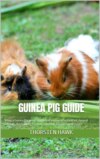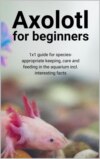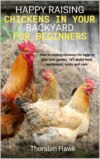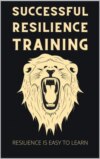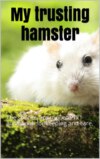Read the book: «Guinea Pig Guide»
Guinea Pig Guide
By Thorsten Hawk
Guinea pigs - they are popular pets for young and old.
You just can't get around the little four-legged friends.
But as beautiful as they are to look at, as much you have to take care of them.
What equipment does the cage need, how big should it be and what do the animals eat?
This guinea pig guide gives answers to all these and many more questions. He lures with a guinea pig food list and a lot of information, which some of us surely didn't know yet.
Content
How should guinea pigs be transported?
The following variants should not be used:
This is how the box is set up correctly:
How are guinea pigs tamed?
The guinea pig keeping
The right care
How to hold and lift a guinea pig
How do you cut guinea pigs' claws?
Sleep like guinea pigs?
How old do guinea pigs get?
What do you feed the rodents?
hay
Flowers, leaves and more
twigs
dried fodder
Seeds and kernels
treats
Water
Guinea pig feed list
How to feed the guinea pig:
Harmful vegetables
Food scraps? No, thanks.
Unhealthy treats
Old bread
Cabbage - it's such a thing
What do you feed guinea pigs in winter?
The feeding of guinea pigs in outdoor housing
Why should guinea pigs be fed cereal-free?
What guinea pigs need
Where do guinea pigs come from?
Sounds and body language
Why do guinea pigs squeal?
Why do guinea pigs vibrate?
Why do guinea pigs jump?
Is this to be interpreted more positively or negatively?
Why do guinea pigs tremble?
Why not bath guinea pigs?
Why should guinea pigs be neutered?
Extra tips for children
How should guinea pigs be transported?
Many will immediately think of a special box. This is also recommended. However, there are some things to consider:
For example, at least two animals should be able to stay in it and still have freedom of movement. The ability to turn and turn is an absolute must. The size must not undercut the following dimensions: 40x30x25 cm (length x depth x height). The bottom should be closed and urine-proof. A ventilation slot is also important.
A big advantage is a box that is open on the front. This enables the animals to climb in themselves. But not everyone is ready. The box must therefore have a large lid at the top so that the pigs can be carried out or in easily. Flaps should adhere to every opening and be able to be closed well so that no guinea pig can fall out.
Whether and to what extent the box needs to be protected during transport depends on the weather conditions. At cold and/or windy temperatures, it is important to protect the box with a cloth. However, care must be taken to ensure that these are nevertheless adequately ventilated. This is very important to ensure the health of the animal! In summer, a cloth should not be used when the temperature is warm. It offers no further protection. Instead, an appropriate facility is recommended so that the rodents can hide away, for example a guinea pig house.
The following variants should not be used:
- the transport on the arm: the piglets can free themselves from it, jump down and seriously injure themselves.
- Boxes, baskets or other open containers. The animals can fall out during transport or jump out of panic themselves. This can also not be prevented by a cloth.
- Transparent boxes/containers: The animals feel unprotected and unsafe.
- Containers that are completely sealed: There is a danger that the animals will suffocate or overheat in agony.
This is how the box is set up correctly:
For a short transport, a warm, thick towel is well suited. This is one of the most hygienic variants. In this way the box remains relatively clean and little dust is formed.
If the animal is to stay there for a longer period of time, make sure that the substrate is absorbent. Flax or hemp mats are suitable for this purpose. A linen bag can also be filled with litter. This is turned over at the opening.
Irrespective of which material is chosen, a certain amount of hay should not be missing. This ensures that the rodent is well supplied. A piece of cucumber is just as important. This allows the animal to absorb liquid during transport.
If this lasts longer, it is obligatory to provide the guinea pig with water at regular intervals. This requires stopping if the transport takes place in the car. If it takes place in public transport, the water should be offered to it in quiet moments. Otherwise, there is a risk of it being spilled or the rodent swallowing it while drinking. If you are staying for a long time, a few pieces of cucumber must be placed in the box. They can't be too small. So the guinea pig has food and liquid in one.
It is also important to insure yourself again and again about your well-being. For (small) animals, especially if they last longer, transportation is usually a great stress. The unfamiliar environment, the high noise level and other people or even dogs and cats contribute to this.
Ready for any weather
Decisive for the equipment are the outside temperature and the temperature in the respective means of transport. If a guinea pig has a cold, it's no joke. Furthermore, it should not become involved in the transport.
If it is very cold outside, a HANDWARME hot water bottle can be wrapped in a towel. It should be checked beforehand that this is really firmly in it and that it is not too hot for the piglet. The hot-water bottle may only be placed on one side of the box. So the animal is free to decide whether it wants to use them or not. The most advantageous is a so-called Snuggle Safe, as the animals tend to nibble on things. This is not possible here.
For cold to normal temperatures, we recommend accessories that allow you to snuggle up well. In summer, however, the heat accumulates here, which is why it should be avoided. Instead, a towel can be hung in the box to provide shade.
It is important never to leave the animals alone in the car!
The box can be placed on the back seat and fastened with a belt. So that it also stands straight, a towel should be put under it. The footwell of the car is also in order, as is the passenger seat. There should always be someone sitting next to the guinea pig.
If it is an animal that feels more comfortable together with its partner, it can be transported in the same box for support, provided that it is not an extremely anxious journeyman.
The free excerpt has ended.
